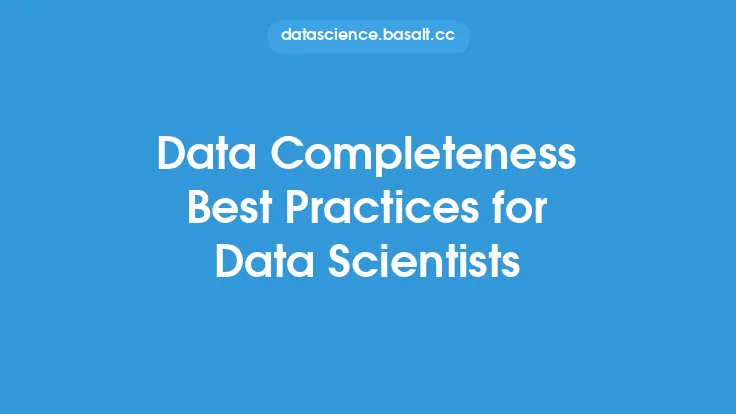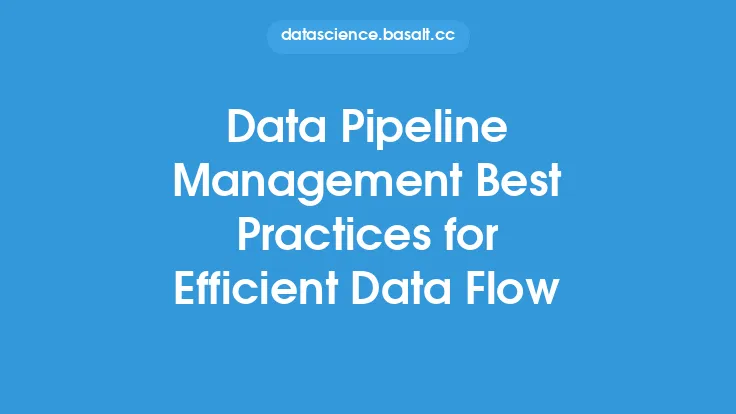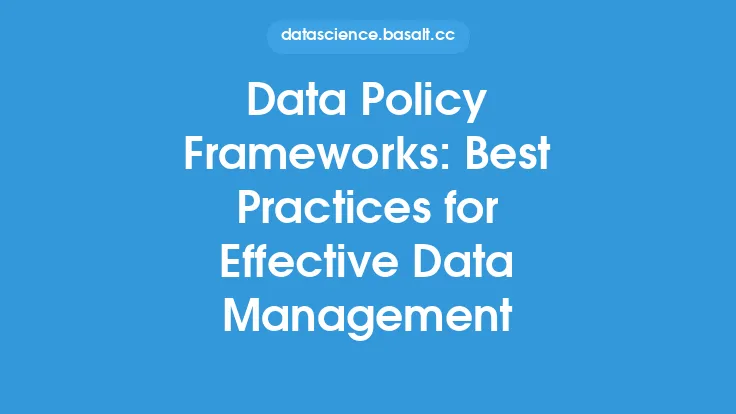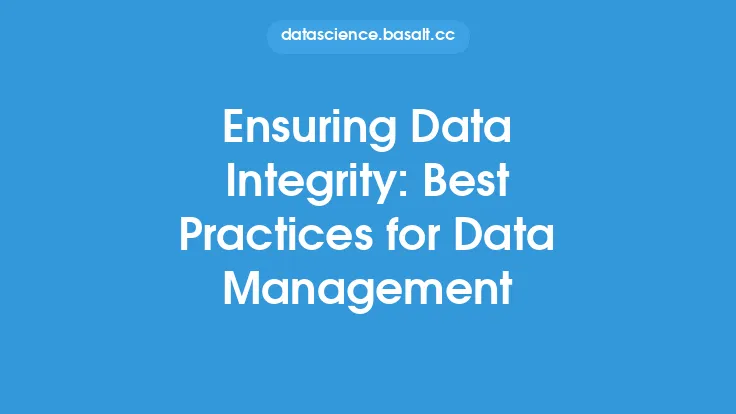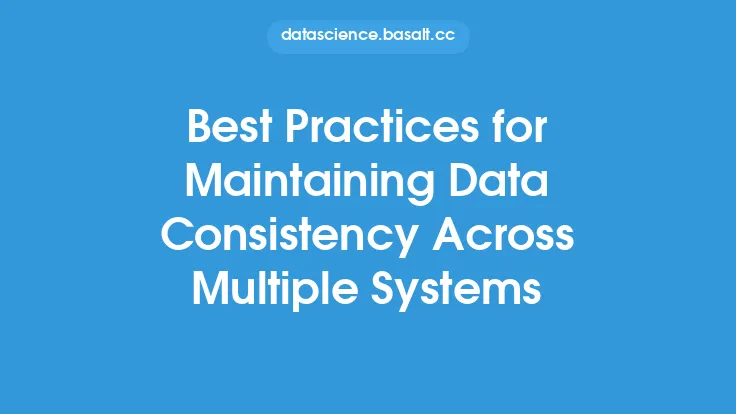As data scientists, managing data effectively is crucial to extracting insights, making informed decisions, and driving business success. With the exponential growth of data, it's becoming increasingly important to have a robust data management strategy in place. In this article, we'll delve into the best practices for data management that data scientists can follow to ensure their data is accurate, reliable, and accessible.
Introduction to Data Management
Data management is the process of collecting, storing, organizing, and maintaining data in a way that makes it accessible and usable for analysis. It involves a range of activities, including data ingestion, data processing, data storage, data security, and data governance. Effective data management is critical for data scientists, as it enables them to focus on higher-level tasks such as data analysis, modeling, and visualization.
Data Ingestion Best Practices
Data ingestion is the process of collecting and transporting data from various sources into a centralized repository. To ensure data quality and integrity, data scientists should follow these best practices:
- Use standardized data formats, such as CSV or JSON, to simplify data ingestion and processing.
- Implement data validation and cleansing techniques to detect and correct errors, inconsistencies, and missing values.
- Use data ingestion tools, such as Apache NiFi or AWS Kinesis, to automate the data collection process and handle large volumes of data.
- Monitor data ingestion pipelines regularly to detect issues and ensure data freshness.
Data Storage and Organization
Data storage and organization are critical components of data management. Data scientists should follow these best practices:
- Use a scalable and flexible data storage solution, such as a data lake or a cloud-based data warehouse, to store and manage large volumes of data.
- Implement a data catalog to provide a centralized repository of metadata, making it easier to discover, access, and manage data.
- Use data partitioning and indexing techniques to improve data retrieval and query performance.
- Ensure data security and access control by implementing encryption, authentication, and authorization mechanisms.
Data Processing and Transformation
Data processing and transformation involve converting raw data into a format suitable for analysis. Data scientists should follow these best practices:
- Use data processing frameworks, such as Apache Spark or Apache Beam, to handle large-scale data processing and transformation.
- Implement data transformation techniques, such as data aggregation, data filtering, and data sorting, to prepare data for analysis.
- Use data quality metrics, such as data completeness and data consistency, to monitor data quality and detect issues.
- Document data processing and transformation workflows to ensure reproducibility and transparency.
Data Security and Access Control
Data security and access control are critical components of data management. Data scientists should follow these best practices:
- Implement encryption mechanisms, such as SSL/TLS or AES, to protect data in transit and at rest.
- Use authentication and authorization mechanisms, such as username/password or role-based access control, to control access to data.
- Implement data masking and anonymization techniques to protect sensitive data.
- Regularly monitor data access logs and audit trails to detect security breaches and unauthorized access.
Data Governance and Compliance
Data governance and compliance involve ensuring that data management practices align with organizational policies and regulatory requirements. Data scientists should follow these best practices:
- Establish a data governance framework to define data management policies, procedures, and standards.
- Implement data compliance mechanisms, such as data retention and data disposal, to ensure adherence to regulatory requirements.
- Use data governance tools, such as data catalogs and data lineage, to track data provenance and ensure data transparency.
- Regularly review and update data governance policies and procedures to ensure they remain relevant and effective.
Data Quality and Integrity
Data quality and integrity are critical components of data management. Data scientists should follow these best practices:
- Implement data quality metrics, such as data accuracy and data completeness, to monitor data quality.
- Use data validation and cleansing techniques to detect and correct errors, inconsistencies, and missing values.
- Implement data normalization and data standardization techniques to ensure data consistency.
- Regularly review and update data quality metrics and procedures to ensure they remain relevant and effective.
Conclusion
Effective data management is critical for data scientists to extract insights, make informed decisions, and drive business success. By following the best practices outlined in this article, data scientists can ensure their data is accurate, reliable, and accessible. Remember, data management is an ongoing process that requires continuous monitoring, evaluation, and improvement. By staying up-to-date with the latest data management techniques and technologies, data scientists can stay ahead of the curve and drive business success.
